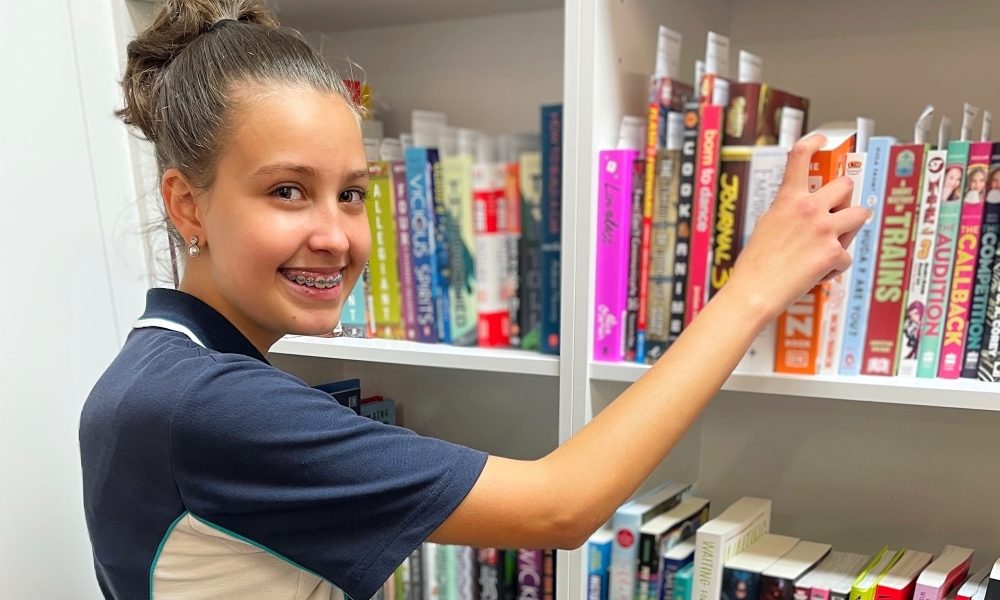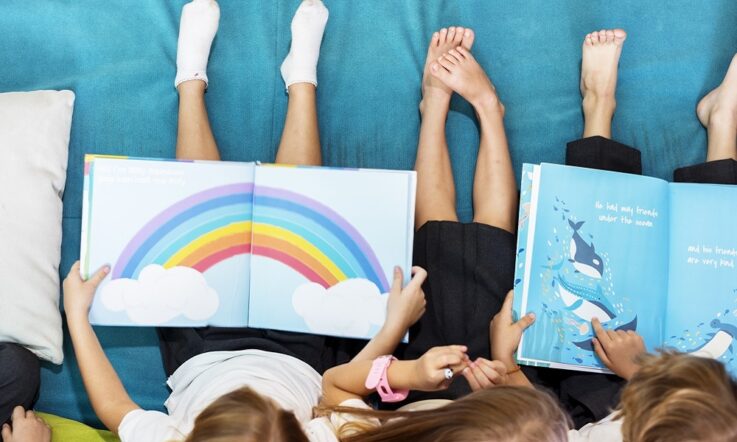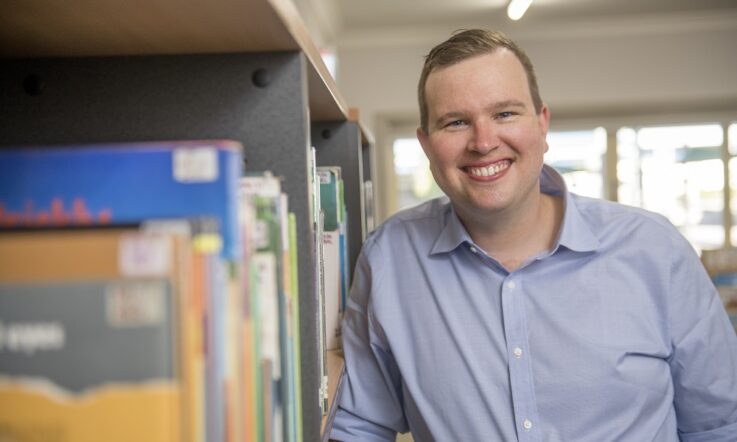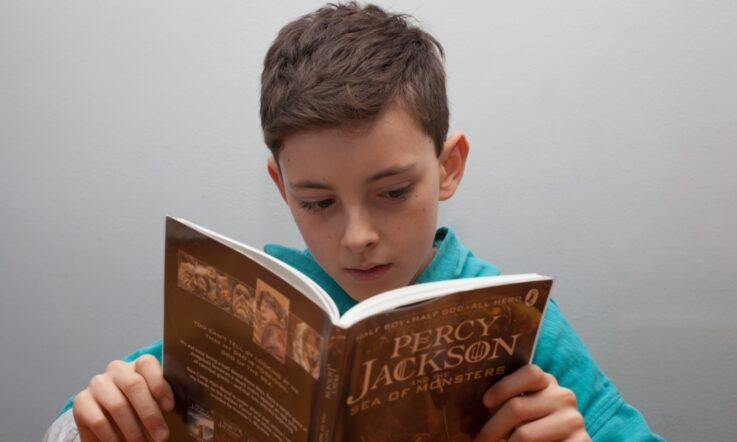At Melba Copland Secondary School in Canberra, the library has been improving students' connection to recreational reading through an innovative program that allows students to select the books the library purchases.
The student-led collection development policy was first trialled in 2018, and was so successful that it has become the library’s primary method of resource acquisition.
Under the program students are able to directly request books for purchase, and can nominate to have the book reserved for them when it arrives.
Patron-driven acquisitions are common in academic libraries for purchasing of research articles, but few libraries currently use the technique to shape their physical collection. The goal of using student-led collection development is to enhance student connection to the library and to increase borrowing and literacy engagement.
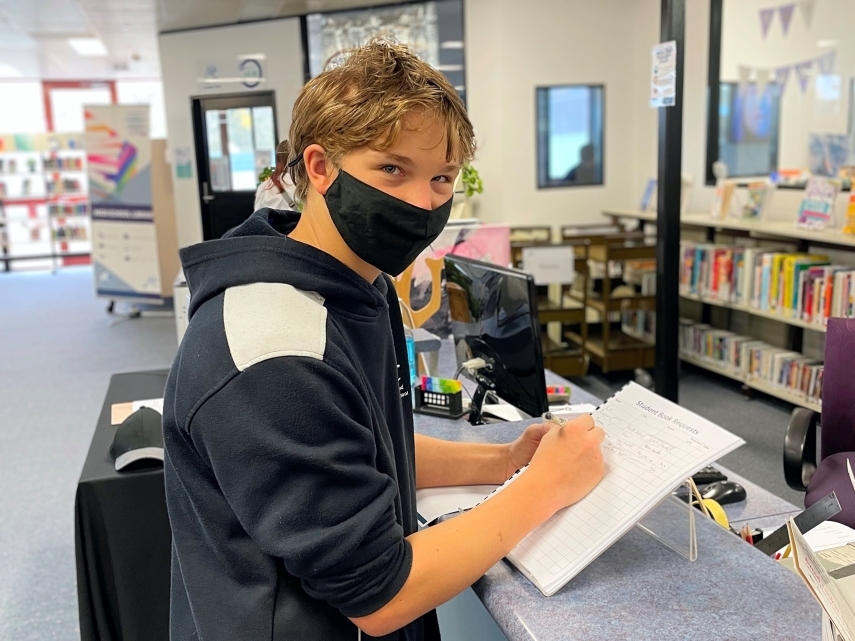
[Students use the request book to nominate a book they would like to be purchased. Image: Supplied]
Library Administrator Rhani Pollock says: ‘Being able to directly request books related to their personal interests creates a real buzz amongst students, and they are really excited for their books to arrive.’
There is strong community support for the library, and many students have already heard of the student request program before starting high school.
‘Students often come into the library to check on the status of their request, and are thrilled when they are ready to borrow,’ Pollock says.
Requested books have a high level of buy-in from the students, and student-selected books have a higher circulation rate compared to staff-selected books.
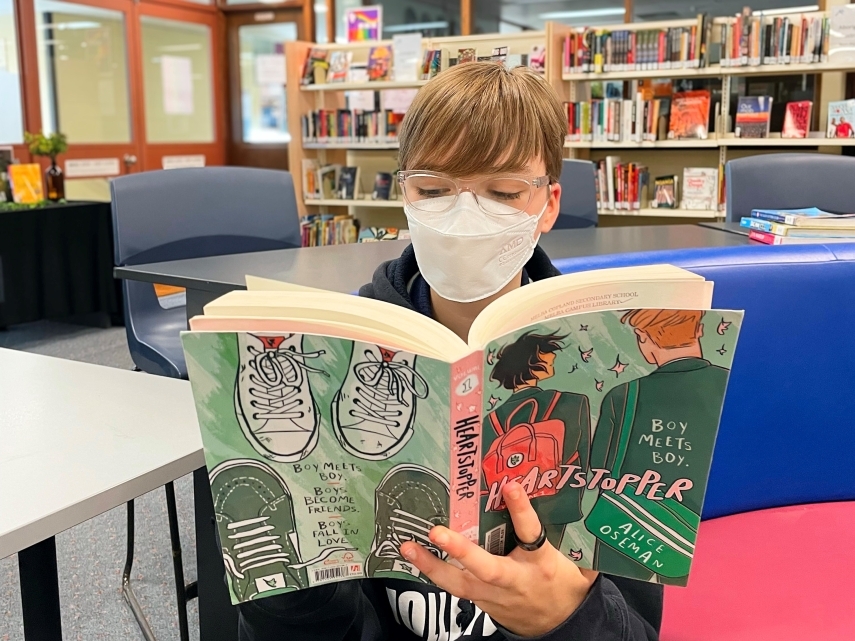
[Students borrow books requested by their peers more frequently. Image: Supplied]
When a book I have requested arrives I feel amazing. Megan, Year 9
Book requests have a name plate placed in the front of the book identifying the student who requested it. Students enjoy seeing their name on the books, and it can assist students who have similar interests in finding new books they would like to read.
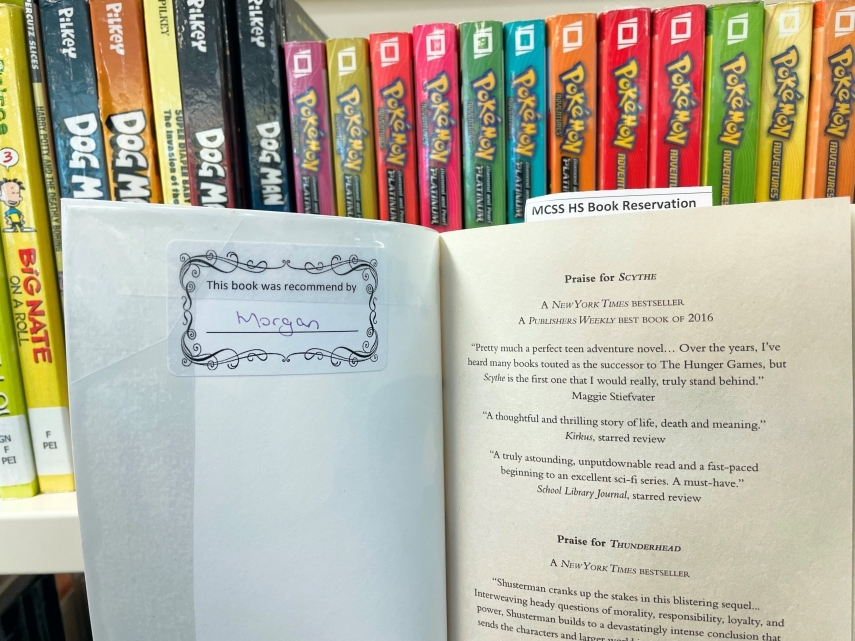
[Name plates recognise the contribution of the student who requested the book. Image: Supplied]
When I see my name plate at the front of a book I feel happy and excited that other people can read that book as well. Kirra, Year 8
Student requested books are displayed prominently in the library and are frequently promoted during book talks and special events.
Within the first four years of the introduction of the program, student borrowing rates increased by 342 per cent. Student-selected books now account for over 80 per cent of book purchases. Teacher Librarians use the remaining 20 per cent to showcase authors, genres and topics that complement and extend the student-led collection development selections.
Teacher Librarians support the program by scaffolding students to help them figure out what they might want to read. This can be through showcasing new authors in book talks, using Goodreads, peer sharing, and browsing bookstores online.
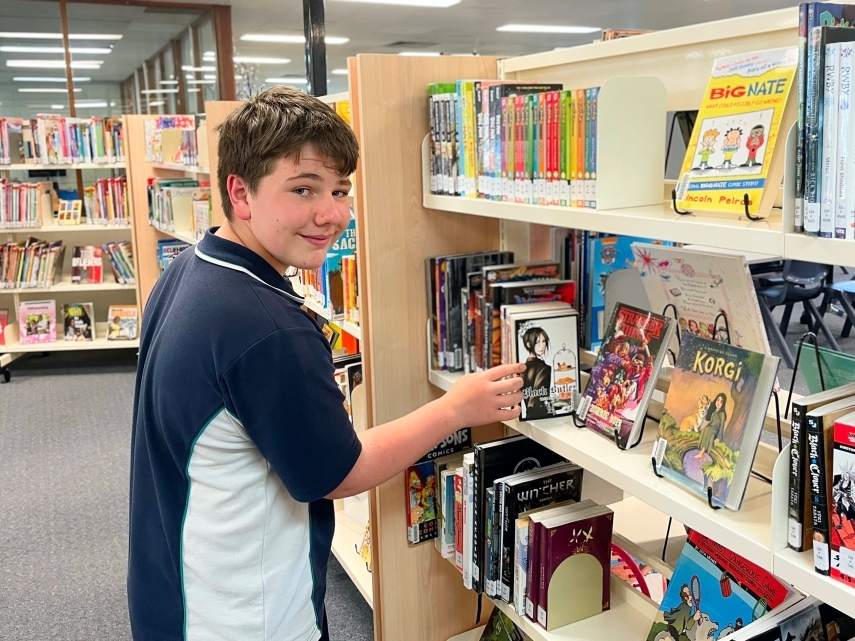
[Some students are ‘book influencers’ and frequently request titles that become popular with their peers. Image: Supplied.]
Teacher Librarian Lisette Robey says: ‘We did not foresee how absolutely game changing the student request system would be. We have so much access now to information about where our students are at, what they are interested in and what they aren’t. It’s made our collection so much more dynamic and targeted, and our borrowing statistics are phenomenal.’
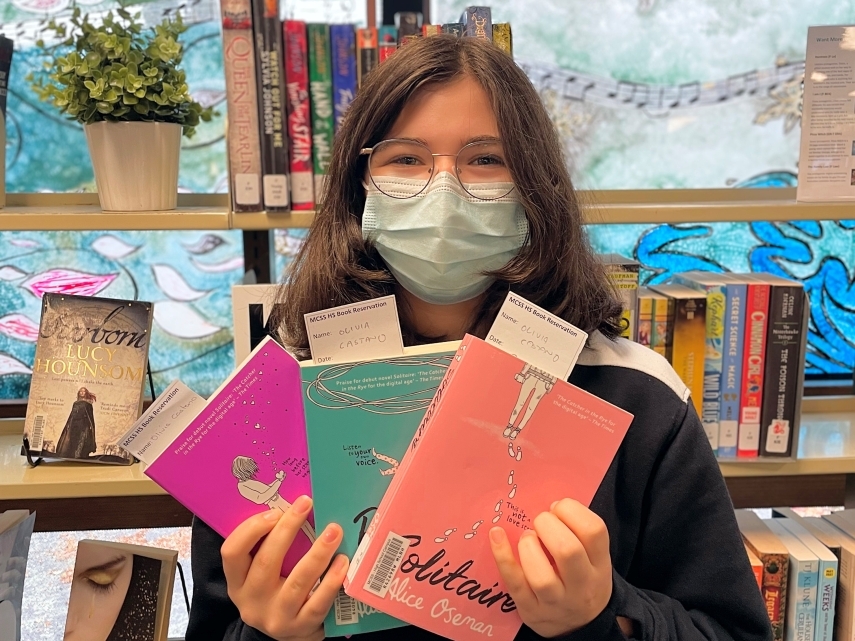
[Students can request multiple books or a whole series. Image: Supplied.]
Teacher librarians clearly explain the purchasing selection criteria and the rationale behind it to students during library lessons. The collection development policy is deliberately generous, and the library will purchase nearly any type of reading material, even if it may only have a niche audience.
Students who are not regular library users are able to connect with the service by requesting a topic or book that is of high interest to them. The library purchases 99 per cent of books requested, and reports strong positive ongoing connections with students who have requested books.
I like being able to get books for the library that others can enjoy, and for my own personal reading. Kathleen, Year 9
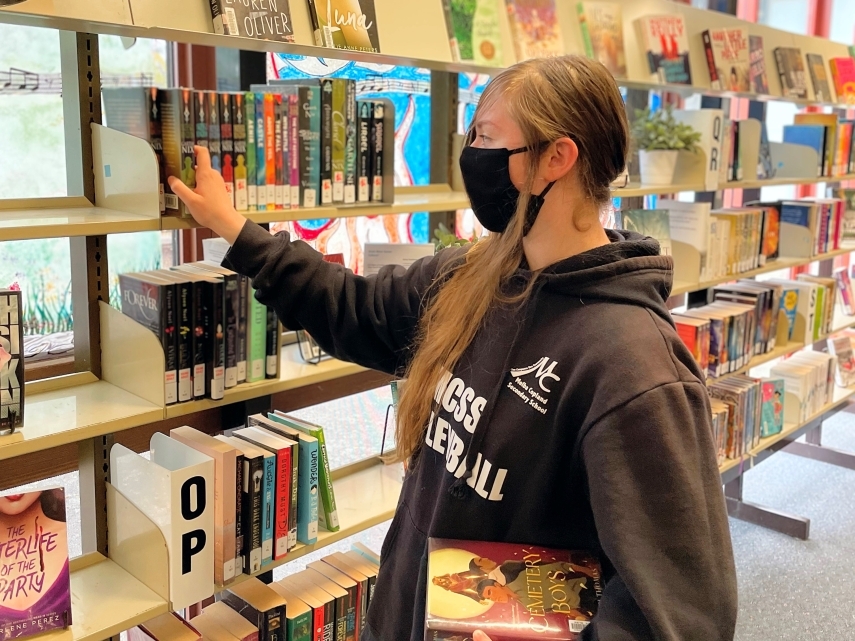
[Students rate the library highly as a ‘trusted and safe space’. Image: Supplied]
Climate and wellbeing surveys have shown that Melba Copland students rate their connection to the library highly.
As well as fostering strong personal connections between students and the library, student requests provide a natural diversification of the library collection, as students request books at all different reading levels and topic complexities.
The student-led collection development program explicitly advertises that the library welcomes all students, regardless of reading level or academic ability.
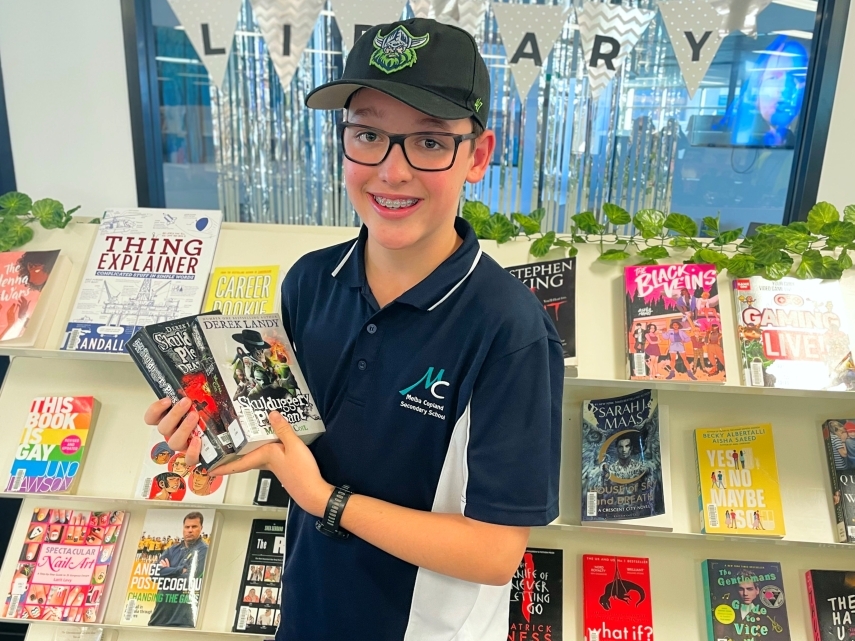
[Students enjoy borrowing from the ‘Recently Returned’ section, which prominently features student requests. Image: Supplied]
Robey says: ‘Students know that the library is a place where what matters to them, matters to us. There’s never any judgement about what their interests are, which makes it easier for students to feel validated as both a person and a reader.
‘As we always say to the students, “All reading is good reading”, and “The best book for you is the one you want to read”.’
Think about the library in your school or classroom. How do you decide which books to purchase? Are students involved in this decision-making? How do you know that you are stocking titles that students are interested in reading?
